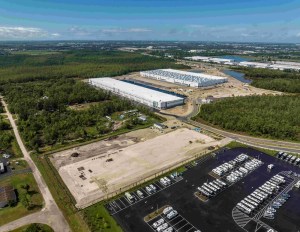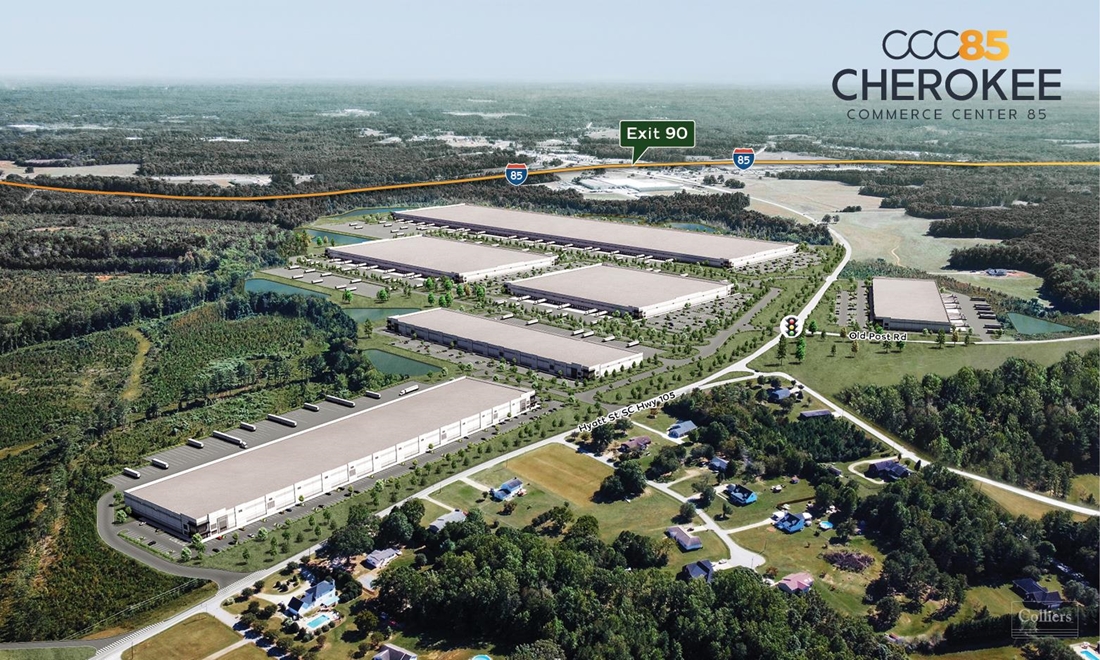Expanding Into Industrial: Diversifying for Long-Term Success
New investors continue to move into the sector, even though it is not isolated from economic challenges.
Attracted by the industry’s resiliency and long-term growth potential, real estate companies continue to expand into the industrial sector, despite the recent downtick in demand and investment activity. By diversifying their portfolios and tapping into industrial’s relative resistance to economic distress, these businesses are capitalizing on the sector’s appeal and betting on its long-term prospects.
One example is Glenstar Properties. Founded in 2004, the Chicago-based company is known as a national office and multifamily developer, but in February it announced one of its first forays into industrial development with a warehouse project between Greenville-Spartanburg, S.C., and Charlotte, N.C.
“We expanded our focus to include ground-up industrial development because we see continued opportunities for growth in the industrial sector, particularly in the Southeast, which has record-low vacancy combined with tremendous population growth that’s creating even more demand for industrial,” Michael Klein, Glenstar Properties co-founder & managing principal, told Commercial Property Executive.
READ ALSO: Industrial Leasing Trends for 2023
At the end of 2021, The Meridian Group also decided to expand its investment strategy as the pandemic fueled the rise of e-commerce, driving increased demand for logistics space nationwide. The firm’s strategy is now centered on the shift in overseas shipping volume from West Coast ports to East Coast ports, as users refine their overall supply chains.
“It’s clear that customers and businesses now expect faster and more efficient delivery of their products, leading to an increased need for expansive warehouses that can keep supply chains running smoothly,” said Kyle Maurer, senior vice president at The Meridian Group.
Even companies that are not traditionally associated with real estate investment, such as technology firms or energy companies, expanded into the industrial sector. For example, data center operator Digital Realty Trust has been acquiring industrial properties in key markets to support its growing business.
A pipeline of potential
After bringing online more than $2 billion in developed space across the U.S., Glenstar is now applying its tenant-focused approach and vertically integrated structure to the industrial sector. The firm teamed up with Columnar Holdings to develop Tri-County 75 in Fort Myers, Fla., and partnered with Creek Lane Capital to develop Cherokee Commerce Center 85 in Gaffney, S.C.
CCC 85 is a 290-acre commercial spec warehouse park with five buildings planned. The first one, a 550,000-square-foot spec-to-suit warehouse, aims to attract tenants seeking mid- to bulk-size industrial space near the busy Interstate 85 corridor in South Carolina.
Tri-County 75 is a 72-acre master planned industrial development with a total of 818,434 square feet across four buildings. Building 3, a 404,000-square-foot cross-dock warehouse, is already leased to Ferguson Enterprises, while Building 2, a speculative 216,412-square-foot warehouse, is awaiting completion this year. Tri-County 75 targets tenants that need to deliver products to customers within a day’s drive and those requiring large amounts of inventory space. The project is coming to life in the Fort Myers submarket, which had a low industrial vacancy rate of 0.5 percent in the fourth quarter of 2022, according to a Cushman & Wakefield report.
Meanwhile, The Meridian Group is working on One Logistics Park, a flagship development that is set to include nearly 3 million square feet of Class A industrial space in Winchester, Va. This development will reportedly deliver the only building of more than one million square feet in the Interstate 81 corridor south of Maryland before 2025, with construction set to be complete in mid-2024.
“Our strategies in housing and industrial are aligned, as we seek to directly invest in markets that have sustained population growth and wage growth,” Maurer said.
The company intends to expand its geographic footprint and explore new markets, particularly in the Sun Belt, where there’s strong commercial real estate growth and relative affordability.
Will industrial demand resist economic pressure?
Higher interest rates have resulted in lower asset values and declining tenant demand, leading to a negative spiral. Experts believe the current price adjustment is more visible in the beginning stages of construction, with some asset classes more affected than others. Industrial seems to be more resilient given its low national vacancy rates.
“The challenges in the capital markets contrast with the strong underlying fundamentals in target markets, where vacancy rates are low,” noted Jon Pharris, CapRock Partners co-founder & president.
The rise in interest rates has resulted in higher borrowing costs and fewer loans being issued. Additionally, lenders are now more conservative and are issuing loans at significantly lower leverage. Despite reduced lending levels, demand for industrial development remains high, particularly for last-mile and fulfillment centers, according to Maurer.
READ ALSO: Manufacturing’s Comeback Boosts Industrial Space Demand
“We are observing a need for new warehouse design given the age of existing product, as well as changes in supply-chain resiliency and the increasing import container volumes on the Eastern Seaboard, especially in the Southeast and along the Gulf Coast. We believe new development in these markets will continue to outperform,” said Maurer.
The changing market also provides investment opportunities, but these can be difficult to decipher. CapRock Partners has slowed its acquisition pace and is well-positioned to take advantage of coming investment opportunities by either directly acquiring an asset or by providing preferred equity or gap financing to existing owners. In a recent interview with CPE, Pharris mentioned that he anticipates increased distress in the market.
“It’s the perfect storm for borrowers: fewer lenders, fewer loan proceeds and higher interest rates,” Pharris added. “Given the changes in lenders’ underwriting criteria, as existing loans mature, borrowers are now facing the reality of a cash-in refinance to meet their extension tests or qualify for a new loan. Many borrowers will not have the cash available to meet these re-margin requirements and therefore will be forced to sell assets or find other, and often more expensive financing options such as preferred equity or mezzanine debt,” he noted.
Things to keep an eye on
One main factor driving change in the industrial real estate market is the increasing demand for resilient and efficient supply chains in the wake of pandemic-related disruptions.
According to Maurer, this pushed many companies to pivot to a “just-in-case” inventory model, with firms increasing their footprints now more than ever. In the Southeast for example, Maurer expects to see further increases in import volumes and high demand for industrial space, considering the ongoing shift in manufacturing away from China, along with new legislation aimed at bolstering U.S. manufacturing—especially as it relates to the auto and EV industry.
Going forward, Pharris anticipates the larger funds to play a more prominent role in the sector, while the smaller operators will be focusing on more niche roles.
“One trend I anticipate is the transition of industrial real estate becoming more sophisticated and institutional in nature,” Pharris said. “Lenders and sellers will be focused on sponsorships that will lend more to institutional-quality borrowers thereby giving them a distinct advantage over smaller companies.”
Despite concerns of a possible economic downturn in 2023, the industrial real estate market is expected to continue growing in the coming years, driven by increased domestic electric vehicle production and continued modernization of both supply chains and production facilities.









You must be logged in to post a comment.